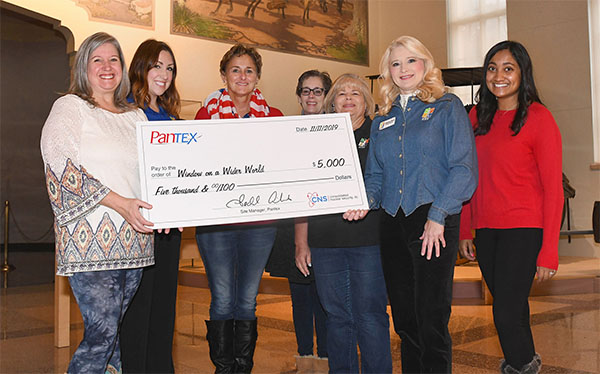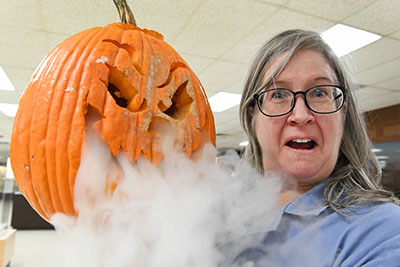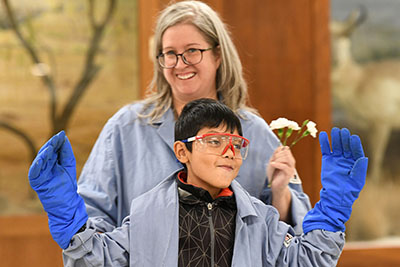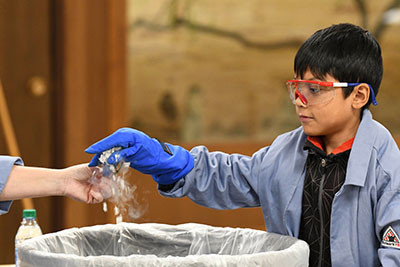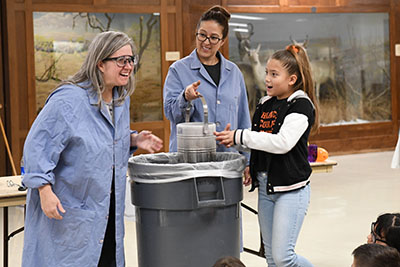Pantex Blog
The Mask Makers of CNS
In response to the COVID-19 pandemic, many employees from both Y-12 and Pantex have become “mask makers” using their skills and talents behind a sewing machine to make masks for their friends,
neighbors and coworkers.

Pantexan Charlotte Thomas and her husband Brian Thomas |
Pantexan Charlotte Thomas has made more than 250 masks, along with the help of her husband Brian Thomas, Potter County Sheriff. He wanted to make sure his people working in the fields and those working in the jail had masks, but like everyone else they couldn’t order any. So Charlotte reached out to a friend from Sunday school who sews and asked for help. The friend directed Charlotte to a YouTube site with a 15-minute mask. On that first day they didn’t even complete one mask, but before the weekend was over they had finished 5 and by the next weekend they’d completed 25. Masks were distributed to their daughter who is an RN working in home health, River Road ISD, and others along with the Potter County Sheriff’s Office.
Charlotte said “Once the picture got out of Brian learning to sew – he had several people call and offer to make masks for him so he very graciously said thank you. And now it is not such a frantic chore to hurry up and finish them. But when you have a family that is comprised of a first responder, a nurse, and a teacher – you learn from the start to give back to the community – they work in those professions because they love serving and that is why we love them. So you help them in any way you can.”
Fellow Pantexan Lauri Minton has also been busy making masks for friends, family, and people in the medical field to wear over their N-95 masks. After her teleworking day ends and on weekends she has made more than 115 masks and a few surgical style hats for a neighbor who is a nurse practitioner in a local pediatric clinic.
Lauri said “I made some for the IS&S folks at Pantex who were issuing laptops and tokens so that many of us could telework; I think having the masks available helped ease their anxieties about exposure risks.”
Y-12er Jennifer Lawson has lost count of how many masks she and her sister have made, but estimate they’re up to around 100.
Jennifer said making masks is a way she can feel like she’s helping people during this scary time. “They at least have the protection of a mask, and in a fabric they chose,” she said. “I view it as a service
project and a way to pay forward all the blessings I have. I still have my job, and am able to work from the safety of my home. Also, lots of people don’t know how to sew, and sewing machines are scarce, along with elastic, fabric, and thread.”
Jennifer and her sister don’t accept payment for the masks they make, because she says the joy come from the giving.
“If people insisted, we asked them to find some way to help someone else or make a donation,” she said. “That way, we keep it going. Plus, people have been sending photos wearing the masks they picked out and seeing those just makes my week.”
Another Pantexan Terri Woodruff has also made masks for friends and coworkers. To date she has made between 150-175 masks and continues to make more as people request them.
Lauri also said “most of us are not doing this for the attention or for recognition – I am personally doing it because I feel called to do it (as a Christian). I have been blessed with MUCH, and ‘to whom much is given, much is expected.’”
We salute these and ALL of the “mask makers” of CNS for their contributions to their family, friends, coworkers, and our communities at large.
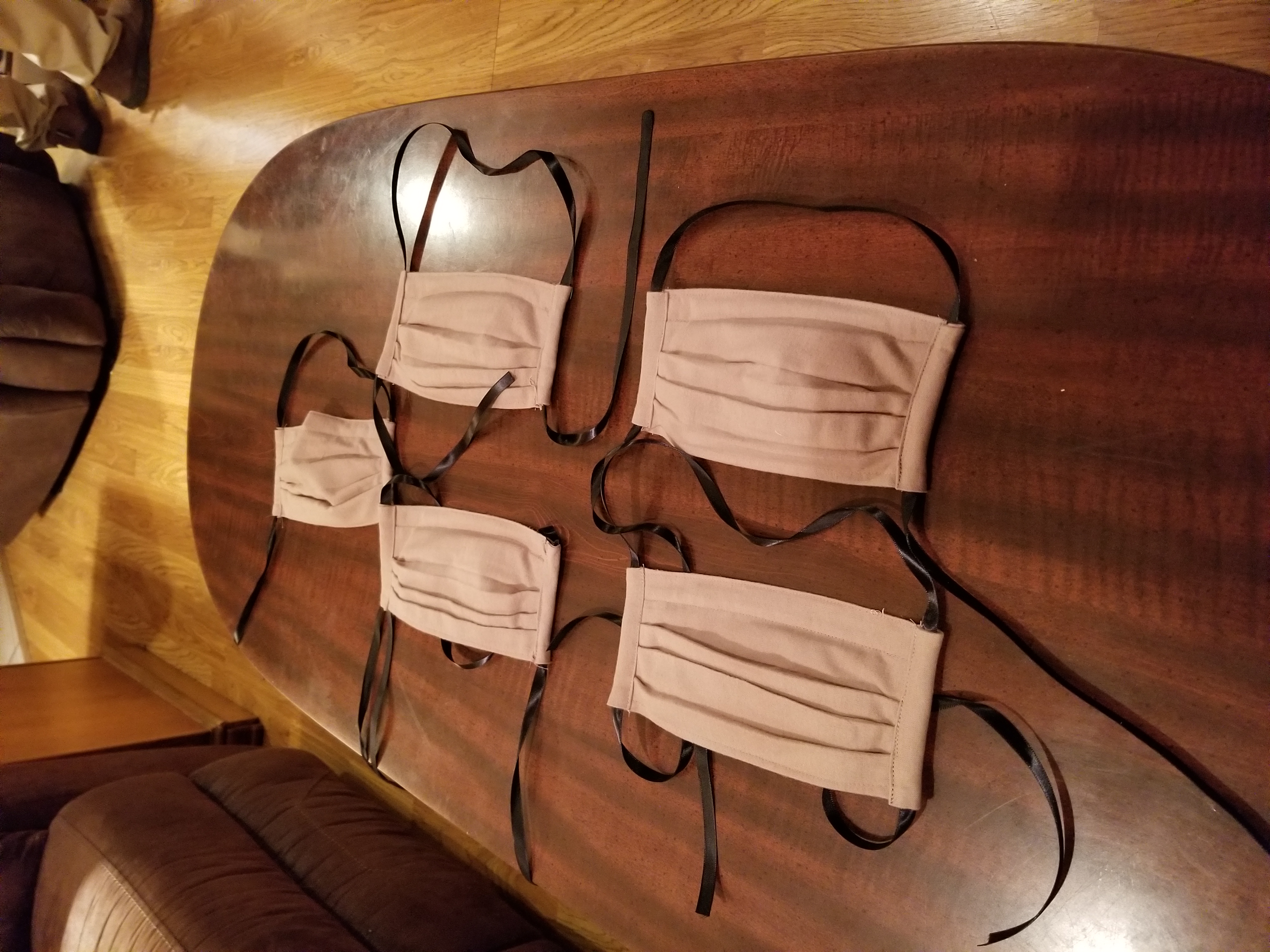
Check it out: Sheltering at home brings new hobbies
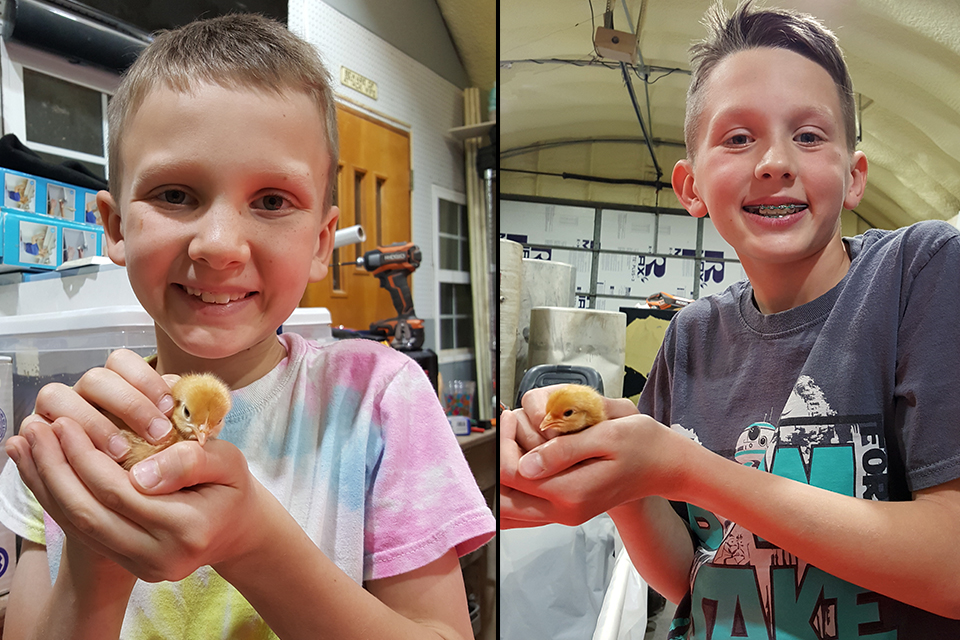
During their time sheltering at home, Pantexans Mandi and Jeremy Neusch, both of Mission Engineering, along with their elementary age sons have taken on home‑schooling in a super practical
way — they’re raising 38 chickens, started a garden, and their cat had kittens! They also planted 107 trees as a future wind break around their farm, and they’re doing all of this on top of teleworking each
day and the boys completing school work through distance learning. Mandi said, “Who says sheltering means you have to sit on the couch?"
Armed Forces Day
"As you go about your day, thank your colleagues, friends, and family who have taken an oath for America and you."
When President Harry Truman announced the creation of Armed Forces Day in 1949, he praised the work of the military services at home and across the seas. He said, "It is vital to the security of the nation and to the establishment of a desirable peace."
The world has changed dramatically since then, and so have our threats and adversaries. As we all navigate the current, unprecedented time of COVID-19, the impact it's had on our daily lives and the uncertainty it brings, I have found it easy to become sidetracked. It's easy to be so focused on what's changing that we forget some things have remained constant. Our armed forces are still working each day to secure our great nation and to establish a desirable peace. As we approach this third Saturday in May, Armed Forces Day, I want to be sure we remember and recognize those who have served and are currently serving.
I am honored to be a part of this group as a former U.S. Navy submarine officer. My time in the U.S. Navy was a rich and rewarding experience, educating me on nuclear technology, providing me rigorous training of shipboard operations, and developing me as a professional and a leader. My experience instilled in me a strong sense of mission that was supported by a value-based culture.
Integrity, trust, teamwork, respect, and excellence were constantly reinforced and grounded in my actions, behaviors, and decisions.
With these same values providing the foundation for our work at Pantex and Y-12, and with the nuclear deterrent as the core of U.S. national security posture, it's not surprising that so many of our colleagues are former or current members of the armed forces. Our values are strong, our purpose is clear, and our mission is significant!
As you go about your day, thank your colleagues, friends, and family who have taken an oath for America and you. Let them know you appreciate the sacrifices they or their children have made or continue to make every day. For without them, America would not, could not, be the symbol of freedom and liberty around the world that it is today.
Elmer Davis, news broadcaster and director of the U.S. Office of War Information during World War II, said, "This nation will remain the land of the free only so long as it is the home of the brave." May we all remember his sentiment and appreciate those brave men and women who join our armed forces.
Ted Sherry
Vice President, Performance Excellence
Pantex presents check to Step Up to Success
On November 6, nearly 600 middle and high school students from schools around Region 16 Education Service Center came to the bi-annual Step Up to Success conference, hosted by Los Barrios de Amarillo, to learn about various occupations within different career fields. The Pantex booth had representatives from various occupations including protective force, engineering, and project management. Dominic Cortez ran a hands-on engineering workshop where the students had to build structures with marshmallows and pasta materials. Pantex also put on a mock Science Bowl competition for the students to test their knowledge.
Los Barrios de Amarillo focuses on the importance of higher education and ties a mentorship program to its scholarships, giving the chance for the students to continue learning from adults even as they pursue higher education.
At the event, Pantex presented $1,000 to the organization to put toward its scholarship fund.
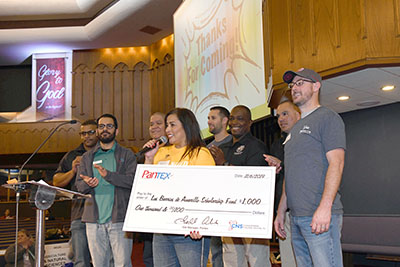

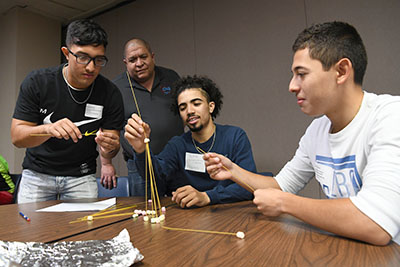
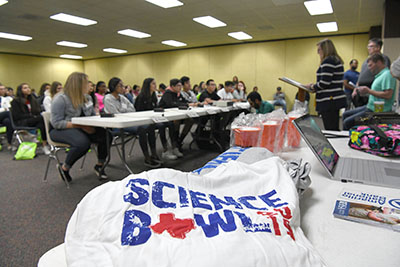
Pantex donates to WOWW Science Collaborative
Pantexans Stephanie Steelman, Bruce Phebus, and Berenice Pitre presented science excitement and education during the Window on a Wider World (WOWW) science collaborative this month.
This event is being held throughout the month of November at the Panhandle Plains Historical Museum in Canyon. The collaborative is an opportunity for fifth graders from the area to learn more about science and STEM (science, technology, engineering, and mathematics) careers in a hands-on way from scientists working at Pantex, Bell Helicopter and other companies.
Pantex presented $5,000 to Window On a Wider World on November 11 to support the ongoing WOWW Science Collaborative efforts.
